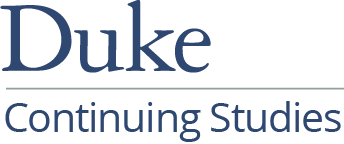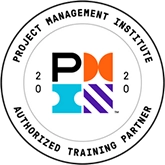What’s Leadership Anyway?
A  Google search on leadership yields 914 million hits. Amazon lists over 17,000 leadership books. And every company seems to have a leadership development program.
Google search on leadership yields 914 million hits. Amazon lists over 17,000 leadership books. And every company seems to have a leadership development program.
Despite all of the resources we have, it’s difficult to understand exactly what leadership is. Often people can’t describe leadership, but they know it when they see it. Three local leaders have seen a lot of leadership, both good and bad. Here’s what they think about the best leadership-not in theory, but in practice in today’s organizations.
Leadership is Trust
Marilyn Smith, President of Life Companies at The Hanover Insurance Group, had a daunting leadership challenge. She needed to retain and motivate staff as they transitioned an entire line of business to another company. Employees knew that completing the project would mean the end of all of their jobs. Yet, 95% stayed on through the transition. Clearly, leadership had something do with these remarkable results.
Marilyn credits much of the success to honesty and trust. She says, “People need to trust you for the organization to be successful.” That means sending the tough messages and being straight with people, even when it’s difficult. Employees appreciate the honesty and work harder knowing they can trust their leaders to tell them the truth.
Underlying the practice of being truthful and honest is a tendency to consider people. The business comes first, and leaders need to make good decisions to support the business, Marilyn explained. But those decisions can also be good for people. For example, Marilyn and her leadership team found opportunities during the closure process to promote people, broaden their skill bases, and provide them with learning that they wouldn't have otherwise received. The opportunities made it worthwhile for many of employees to stay with the company. They also showed employees that their leaders cared about them. As one walked out the door on the last day, she told Marilyn that she was leaving the best job she had ever had.
Build Trust in Your Leadership
- Always tell the truth and be straight with people even when it’s difficult. Not only can people handle the truth, they’ll be thankful to have it.
- Look for opportunities for business decisions to benefit people. Even in the most difficult circumstances, it’s possible to find an opportunity to help someone grow, learn, or succeed.
- Don’t solve problems yourself. Engage others. It builds the team and increases their commitment to results.
Leadership is Alignment
Leaders of nonprofit organizations have a specific challenge: work within limited budgets to engage a broad range of stakeholders around a common cause. Charlie McDermott is Deputy Director of the Massachusetts Cultural Council, a state agency that supports hundreds of nonprofit cultural organizations in Massachusetts. He talked about how leaders succeed through alignment.
For one thing, leaders must be able to align the highest vision and goals of an organization with the details of day-to-day operations. Says Charlie, “Leaders see the through-line. They keep the big picture in focus, but they are rigorous in assessing what resources are needed to advance their goals—and dogged in securing those resources.”
But alignment isn’t just about resources and goals. It’s also about people. “It’s important for there to be alignment between constituents,” Charlie explained. Especially in nonprofit organizations, there are often gaps between the perspectives and priorities of staff and board. The leader’s job is to help bridge those gaps, encouraging a common direction despite differences.
Create Alignment through Your Leadership
- Articulate the common vision and spread it throughout constituent groups
- Find the common thread between constituent groups: what do they all care about?
- Connect tactics and tasks to the big picture. Make sure that all activities align with the vision of the organization. If not, reassess whether the activity is necessary.
Leadership is Knowledge
“Titles can get in the way,” says Amin Marts of Novell. Amin is an Applied Technology Strategist who provides thought leadership from the Novell perspective to the outside world. Although he has no direct reports, Amin leads every day and believes that companies need leaders throughout the organization.
Leadership begins with knowledge. Good leaders become “central repositories of information for [their] focus,” Amin explained. They provide a uniqueness of interpretation that people find valuable and compelling. Organizations need people throughout their systems that can possess and interpret information.
However, leading through knowledge requires more than becoming a subject matter expert. Successful leaders identify what’s important amidst tremendous amounts of data, extract that information, and connect it to the needs and interests of a listener. Amin described this as an organic process, in which leaders adapt their approach and message to each specific audience. It’s challenging and requires thought, but results in solid wins as leaders create positive relationships. People gravitate towards these leaders, knowing that the leaders will truly listen and respond to what they need.
Enhance Knowledge to Support Your Leadership
- Subscribe to several magazines and journals, at least 2 of which are outside your area of focus.
- Make a practice of meeting and listening new people, especially those outside your focus area.
- Practice articulating the viewpoints and needs of various constituent groups. Then experiment with adapting your message to address to their interests.
And, Finally, Leadership is Shared
Many successful leaders say the same thing: “I can’t take all the credit.” Good leaders involve others, solve problems collaboratively, seek advice, and coach others to lead. So, in the end, leadership is about building trust, creating alignment, and enhancing knowledge... and encouraging others to do the same.
About the Author
Maya Townsend, MSOD, is a Trainer and Consultant for Corporate Education Group. Maya is also Founder and Lead Consultant for Partnering Resources, where she specializes in leadership, strategy and collaboration. During her career, Maya has successfully designed and facilitated training programs to over 5000 people in groups of 3 to 130 in the public and corporate sectors. Highly intuitive, analytical, and imaginative, Maya works at all levels, from CEOs to line workers, to develop the relationships, ideas, connections, and interdependencies that shift an organization to the next level of productivity and performance.
A  Google search on leadership yields 914 million hits. Amazon lists over 17,000 leadership books. And every company seems to have a leadership development program.
Google search on leadership yields 914 million hits. Amazon lists over 17,000 leadership books. And every company seems to have a leadership development program.
Despite all of the resources we have, it’s difficult to understand exactly what leadership is. Often people can’t describe leadership, but they know it when they see it. Three local leaders have seen a lot of leadership, both good and bad. Here’s what they think about the best leadership-not in theory, but in practice in today’s organizations.
Leadership is Trust
Marilyn Smith, President of Life Companies at The Hanover Insurance Group, had a daunting leadership challenge. She needed to retain and motivate staff as they transitioned an entire line of business to another company. Employees knew that completing the project would mean the end of all of their jobs. Yet, 95% stayed on through the transition. Clearly, leadership had something do with these remarkable results.
Marilyn credits much of the success to honesty and trust. She says, “People need to trust you for the organization to be successful.” That means sending the tough messages and being straight with people, even when it’s difficult. Employees appreciate the honesty and work harder knowing they can trust their leaders to tell them the truth.
Underlying the practice of being truthful and honest is a tendency to consider people. The business comes first, and leaders need to make good decisions to support the business, Marilyn explained. But those decisions can also be good for people. For example, Marilyn and her leadership team found opportunities during the closure process to promote people, broaden their skill bases, and provide them with learning that they wouldn't have otherwise received. The opportunities made it worthwhile for many of employees to stay with the company. They also showed employees that their leaders cared about them. As one walked out the door on the last day, she told Marilyn that she was leaving the best job she had ever had.
Build Trust in Your Leadership
- Always tell the truth and be straight with people even when it’s difficult. Not only can people handle the truth, they’ll be thankful to have it.
- Look for opportunities for business decisions to benefit people. Even in the most difficult circumstances, it’s possible to find an opportunity to help someone grow, learn, or succeed.
- Don’t solve problems yourself. Engage others. It builds the team and increases their commitment to results.
Leadership is Alignment
Leaders of nonprofit organizations have a specific challenge: work within limited budgets to engage a broad range of stakeholders around a common cause. Charlie McDermott is Deputy Director of the Massachusetts Cultural Council, a state agency that supports hundreds of nonprofit cultural organizations in Massachusetts. He talked about how leaders succeed through alignment.
For one thing, leaders must be able to align the highest vision and goals of an organization with the details of day-to-day operations. Says Charlie, “Leaders see the through-line. They keep the big picture in focus, but they are rigorous in assessing what resources are needed to advance their goals—and dogged in securing those resources.”
But alignment isn’t just about resources and goals. It’s also about people. “It’s important for there to be alignment between constituents,” Charlie explained. Especially in nonprofit organizations, there are often gaps between the perspectives and priorities of staff and board. The leader’s job is to help bridge those gaps, encouraging a common direction despite differences.
Create Alignment through Your Leadership
- Articulate the common vision and spread it throughout constituent groups
- Find the common thread between constituent groups: what do they all care about?
- Connect tactics and tasks to the big picture. Make sure that all activities align with the vision of the organization. If not, reassess whether the activity is necessary.
Leadership is Knowledge
“Titles can get in the way,” says Amin Marts of Novell. Amin is an Applied Technology Strategist who provides thought leadership from the Novell perspective to the outside world. Although he has no direct reports, Amin leads every day and believes that companies need leaders throughout the organization.
Leadership begins with knowledge. Good leaders become “central repositories of information for [their] focus,” Amin explained. They provide a uniqueness of interpretation that people find valuable and compelling. Organizations need people throughout their systems that can possess and interpret information.
However, leading through knowledge requires more than becoming a subject matter expert. Successful leaders identify what’s important amidst tremendous amounts of data, extract that information, and connect it to the needs and interests of a listener. Amin described this as an organic process, in which leaders adapt their approach and message to each specific audience. It’s challenging and requires thought, but results in solid wins as leaders create positive relationships. People gravitate towards these leaders, knowing that the leaders will truly listen and respond to what they need.
Enhance Knowledge to Support Your Leadership
- Subscribe to several magazines and journals, at least 2 of which are outside your area of focus.
- Make a practice of meeting and listening new people, especially those outside your focus area.
- Practice articulating the viewpoints and needs of various constituent groups. Then experiment with adapting your message to address to their interests.
And, Finally, Leadership is Shared
Many successful leaders say the same thing: “I can’t take all the credit.” Good leaders involve others, solve problems collaboratively, seek advice, and coach others to lead. So, in the end, leadership is about building trust, creating alignment, and enhancing knowledge... and encouraging others to do the same.
About the Author
Maya Townsend, MSOD, is a Trainer and Consultant for Corporate Education Group. Maya is also Founder and Lead Consultant for Partnering Resources, where she specializes in leadership, strategy and collaboration. During her career, Maya has successfully designed and facilitated training programs to over 5000 people in groups of 3 to 130 in the public and corporate sectors. Highly intuitive, analytical, and imaginative, Maya works at all levels, from CEOs to line workers, to develop the relationships, ideas, connections, and interdependencies that shift an organization to the next level of productivity and performance.
Project Management Training Solutions
Discover how project management training from Corporate Education Group can help your company achieve its desired outcomes and improve working relationships and productivity.


- ©2026 Corporate Education Group, operated by CEG Operating Company, LLC. All Rights Reserved.
Privacy Policy | Terms and Conditions - Corporate Education GroupSM and Learning That Powers PerformanceSM are service marks of Corporate Education Group, Inc., PMI®, PMP®, CAPM®, PgMP®, PMBOK®; and the PMI®; Registered Education Provider logo are registered trademarks of the Project Management Institute, Inc. CBAP® and IIBA® are registered trademarks of International Institute of Business Analysis. All other trademarks mentioned on this site are property of their respective owners. All rights reserved. CEG is an approved Authorized Partner within the Blanchard Authorized Partner Program and is licensed to market, sell, and train SLII®.








